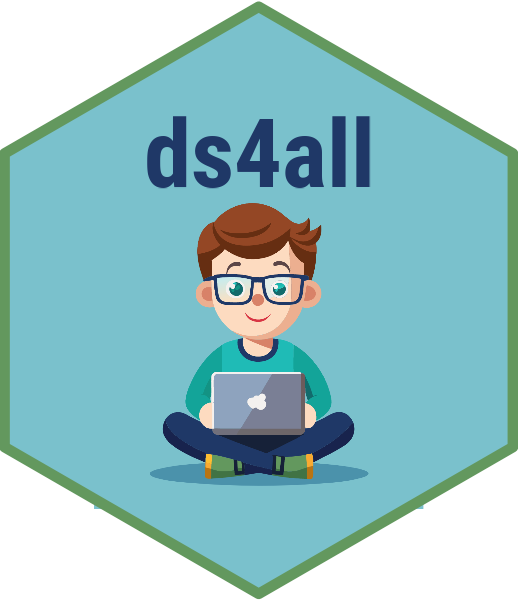[1] 4R Coding Basics
June 22, 2025
R Programming Basics
What Can R Do?
- R is a powerful language for data analysis and visualization
- It is also a general-purpose programming language
- Does everything from web development to machine learning
- It is open-source and has a large community of users and developers
R as a Calculator
- R can be used as a simple calculator
- You can perform arithmetic operations on numbers
Some Common Arithmetic Operators
+addition-subtraction*multiplication/division^exponentiation (also**)
Your Turn!
- Try some basic calculations
- Try them in a code chunk in the Quarto doc
- Then try some in the console
05:00
Objects
What is an Object?
- An object in R is a data structure used to store data
- It can vary from simple scalar types to more complex data structures like vectors, lists, or data frames
- Objects hold not only data but also information about the type of data and the operations that can be performed on them
- Every entity in R is considered an object, making R a language based around the manipulation of objects
How to Store Data
- In R, you can store data in objects using the assignment operator
<- - The object name is on the left of
<-, and the data or value you wish to assign to the object is on the right - Then you can print the object to the console using the object name
Storing a Vector
- Sometimes you want to store more than one number
- In this case you can store a vector
- A vector is a collection of numbers or characters
“Printing” objects
- Sometimes you will see
print()used to display the contents of objects - This is not typically necessary
- Sometimes you need it (like when printing inside of a function)
- But usually you can just type the name of the object
Your Turn!
- Store a number in an object
- Create a vector of numbers and store it in an object
- “Print” the objects by typing the object names
05:00
Functions
Functions
- A function is a set of instructions that produces some output
- In R, you can use built-in functions to perform specific tasks
- For example, you can use the
mean()function to calculate the average of a set of numbers - To do this you have to use the combine function
c()to create a vector of numbers
Create a vector of numbers and take the mean…
Some Common Base R Functions
mean()calculates the mean of a set of numbersmedian()calculates the median of a set of numberssd()calculates the standard deviation of a set of numberssum()calculates the sum of a set of numberslength()calculates the length of a vectormax()andmin()calculate the maximum and minimum values of a vectorround()rounds a number to a specified number of decimal placessqrt()calculates the square root of a numberlog()calculates the natural logarithm of a numberexp()calculates the exponential of a numberabs()calculates the absolute value of a number
Your Turn!
- Create a vector of numbers
- Store as an object
- Apply a function to the object
05:00
Packages
From Functions to Packages
- A function is a set of instructions
read_csv()is a functionggplot()is a function
- A package is a collection of functions
readris a package that contains theread_csv()functionggplot2is a package that contains theggplot()function
- Use
install.packages()to install packages - Use
library()to load packages - You can install packages from CRAN
Installing Packages
- You can install packages from CRAN (Comprehensive R Archive Network)
- Use the
install.packages()function to install packages - For example, to install the
tidyversepackage, you would runinstall.packages("tidyverse")
Installing Packages
- Another way to install packages is from a GitHub repository
- We will use the
pakpackage to install packages from GitHub - To install
pak, runinstall.packages("pak") - Then you can use
pak::pkg_install()to install packages from GitHub - For example, to install the
vdemlitepackage, you would runpak::pkg_install("eteitelbaum/vdemlite")
Installing Packages
- You only need to install a package once
- After you install a package, you can load it with the
library()function - Do not put
install.packages()in your R script or Quarto document
Your Turn!
- Install the
tidyversepackage in your environment - Load the
tidyversepackage - Install the
pakpackage - Install
vdemliteusingpak::pkg_install() - Load the
vdemlitepackage
05:00
Running R and RStudio Locally
Installing R and RStudio
- You can install R and RStudio on your local machine
- Visit Posit to download R and RStudio
- Install R first, then RStudio
- You download R from CRAN and RStudio from the RStudio website
Try It!
- Install R and RStudio on your local machine
- Open RStudio
- Open a Quarto document
- Try some of the code we have used today
- Install the
tidyversepackage
